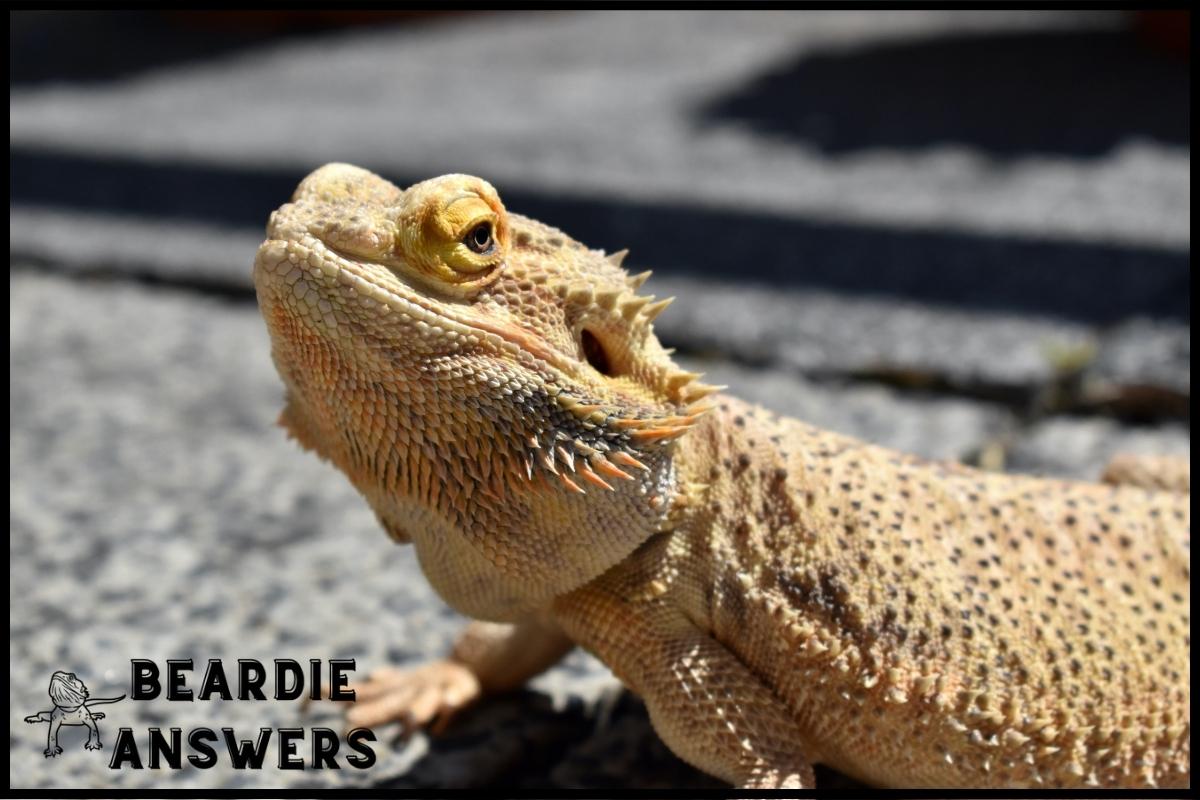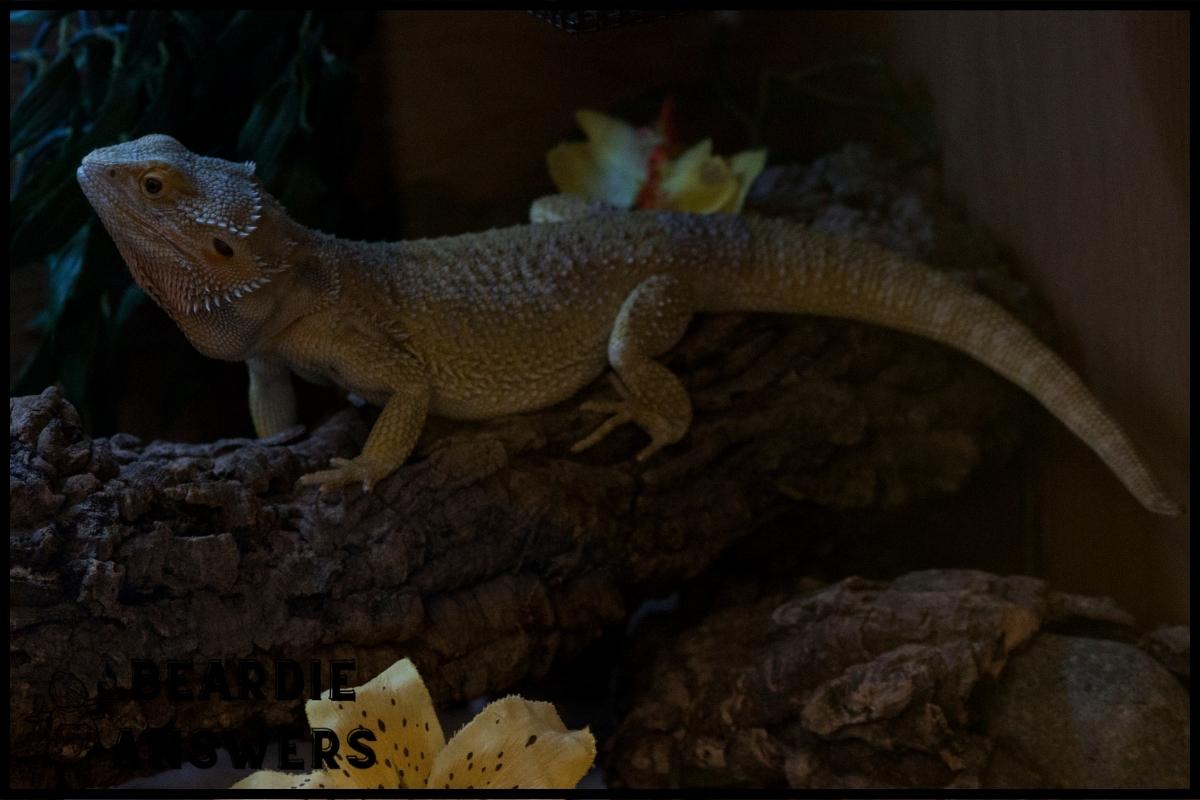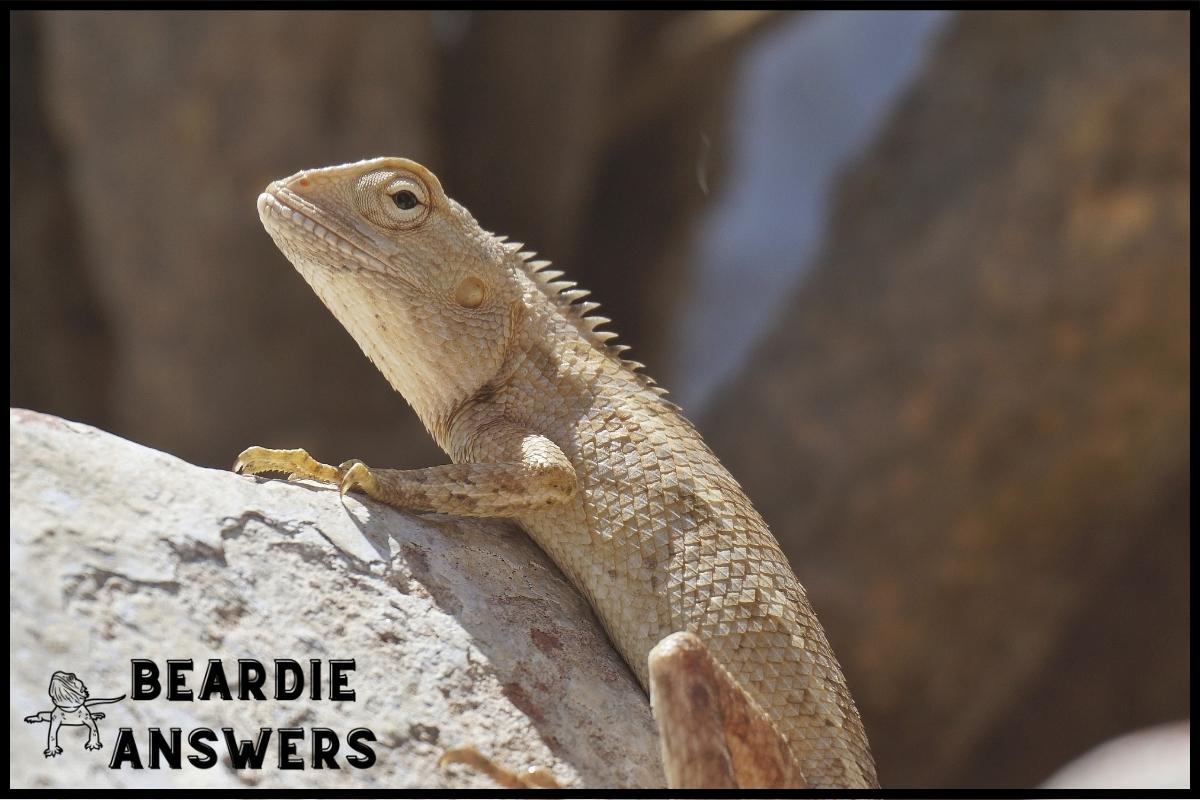The ruby red bearded dragon is a color variation of the bearded dragon that has a reddish hue to its scales. This variation is caused by a recessive genetic trait that affects the production of pigments in the reptile’s skin. Ruby red bearded dragons are relatively rare and highly valued for their striking coloration.
What You'll Learn
Overview Of The Ruby Red Bearded Dragon
The ruby red bearded dragon is a beautiful creature with its distinctive reddish hue. It’s one of the most popular pet reptiles due to their social behavior and friendly nature.
When it comes to handling tips, you should always support your beardie’s body from underneath when holding them, as they can become stressed if suspended in mid-air for too long. As these lovable creatures are quite timid, patience and gentleness are key when interacting with them. Getting used to human contact takes time, but once familiarized, they will often seek out attention!
Moving on from social behavior and handling tips, let’s take a look at the physical characteristics of the ruby red bearded dragon.
Physical Characteristics Of The Ruby Red Bearded Dragon
The ruby red bearded dragon is a unique and beautiful variation of the standard bearded dragon. Its defining feature is its bright, reddish hue that sets it apart from other color morphs.
As with any type of lizard, there are certain physical characteristics that distinguish this species from others. One interesting statistic to consider when discussing the ruby red bearded dragon is their scalation pattern; they typically have more scales than other types of lizards in order to accommodate their vibrant coloring.
The color depth also varies depending on the individual; some may be brighter while others may appear darker due to genetics or environmental factors.
Beyond how they look, another aspect worth considering about the ruby red bearded Dragon is their diet and habitat requirements. Depending on where you live, there could be restrictions on what kind of enclosure would best suit one’s pet as well as considerations for feeding them appropriate foods.
Taking these into account will go a long way towards ensuring your beloved reptile has a happy and healthy life!
Habitat And Diet Requirements
The ruby red bearded dragon is a popular pet due to its hardy nature and ease of care. To ensure their health and happiness, it’s important to understand the needs of this reptile in terms of habitat setup and diet requirements:
Habitat Setup:
- Temperature Needs: It’s essential that the enclosure for your ruby red bearded dragon maintains two thermal gradients, with one side heated up to 95–110°F during the day, and another cooler spot around 85–90°F at night. This can be achieved through lights or heating pads/stones.
- Humidity Levels: The humidity level should stay between 30% – 50%, although dragons will tolerate higher levels if they are given access to moist hides and water baths.
- Substrate: Choose an appropriate substrate such as soil, sand, or paper towels, which will help maintain optimal temperatures while allowing easy burrowing behaviors.
Diet Requirements:
- Protein Sources: Offer live insects like crickets, mealworms or wax worms every other day as a main source of protein. You may also offer some dark leafy greens for additional nutrients.
- Vitamins & Supplements: Dust feeder insects with calcium powder 1–2 times per week, and vitamin powder 2–3 times per month for healthy growth. Avoid overfeeding these supplements as too much could lead to bone diseases in your dragon.
- Variety & Moderation: Provide variety within the insect kingdom by offering different types of bugs from time to time and stick to moderation when feeding them so that their dietary needs are met without overindulging on any one type of food item.
Overall, providing adequate housing conditions along with proper nutrition is key to keeping your bearded dragon happy! With consistent care, you’ll soon have a thriving companion who loves exploring his environment and basking under heat lamps !
Care And Maintenance Tips
The ruby red bearded dragon is a beautiful creature that can bring joy and companionship. Caring for these amazing creatures, however, isn’t always easy. Knowing their housing needs and setting up the right enclosure are key to ensuring your ruby red bearded dragon’s health and happiness.
When it comes to housing needs, you’ll need an appropriately sized terrarium with plenty of air circulation. The size of the terrarium should be based on the number of dragons in your group; one 20-30 gallon tank per dragon is usually recommended.
Making sure there’s some form of light source, like an ultraviolet bulb or natural sunlight, is also important since dragons require UV rays to make Vitamin D3. Additionally, adding lots of branches and rocks will give them places to hide and bask in the sun while they explore their environment.
Creating a suitable living space requires careful planning – from heating elements to substrate choices – but if done correctly it can provide hours of enrichment for your reptile friend! With proper care and maintenance, you can ensure that your ruby red bearded dragon lives a long happy life with you by its side.
Next up: breeding and reproduction – another exciting chapter in caring for this unique species!
Breeding And Reproduction
We need to talk about egg laying and incubation periods when it comes to breeding and reproduction of the ruby red bearded dragon.
These two factors have a major impact on the success of the breeding process.
Egg Laying
When it comes to breeding and reproduction, egg laying is an important part of the process for ruby red bearded dragons.
After mating, female dragons typically lay their eggs in a nesting area that has been prepared by either themselves or their mate.
Incubation periods vary but can last up to 8 weeks depending on temperature and humidity levels.
Nests are typically built with sand and other materials like dirt or sticks, allowing the eggs to be slightly buried while they incubate.
As soon as they hatch, baby dragons will emerge from the nest ready to take on the world!
Incubation Periods
Temperature control is key when it comes to incubation periods for ruby red bearded dragons, as eggs that are exposed to temperatures outside of the desired range can be damaged or destroyed.
To ensure successful egg development, an appropriate environment must be maintained throughout the entire incubation period, which typically lasts up to 8 weeks.
Humidity levels should also be monitored closely in order to provide a comfortable atmosphere for the developing eggs and prevent them from drying out too quickly.
With proper care and temperature control, owners can rest assured knowing their dragon’s eggs have been given every chance possible at hatching into healthy baby dragons!
Health Issues To Look Out For
Breeding and Reproduction is an important part of owning a ruby red bearded dragon, but it’s only the first step in ensuring a long and healthy life for your pet. Health issues are inevitable with any reptile, so as an owner you should be aware of potential illnesses that may arise. Taking preventative steps to protect against disease is key in keeping your dragon happy and healthy.
Here are three important health tips to keep in mind when caring for a Ruby Red Bearded Dragon:
- Monitor their diet closely – A well balanced diet filled with fresh vegetables and insects can help promote good health.
- Ensure proper enclosure temperatures – Keeping the temperature at the correct levels will ensure they stay warm enough during cold winter nights and cool enough during hot summer days.
- Look out for signs of illness – Early detection of diseases or parasites can make all the difference in treating them quickly before things become worse.
It goes without saying that regular checkups by a qualified veterinarian familiar with reptiles is also essential in illness prevention and disease diagnosis. To maintain optimal health, follow these guidelines along with other general care instructions such as adequate housing, ample exercise opportunities, exposure to natural sunlight or UVB lighting if not kept outdoors, clean water daily etc..
With this knowledge tucked away securely under your belt, you can now go forth confidently knowing how to best look after your furry friend!
Conclusion
In conclusion, the ruby red bearded dragon is a popular pet for reptile enthusiasts. With its vibrant color and personality, it’s easy to see why they are so sought after.
However, owning one comes with responsibility – you need to provide proper care and diet requirements in order to ensure your pet stays healthy and happy. If done correctly, these dragons can make great companions that will bring joy into your life.
But don’t be fooled by their small size; they may have big personalities but they also require lots of attention! So if you’re ready for the challenge of caring for this unique creature, then go ahead and get yourself a ruby red bearded dragon today!

Hi! My name is Bryan, I am the “one behind the words” here are BeardieAnswers.com. I believe that providing quality care and nutrition is the best way to ensure the health of your pet. Every beardie is special and deserves the best care and attention. If you have questions about your bearded dragon, please don’t hesitate to ask! View My Full Author Page




